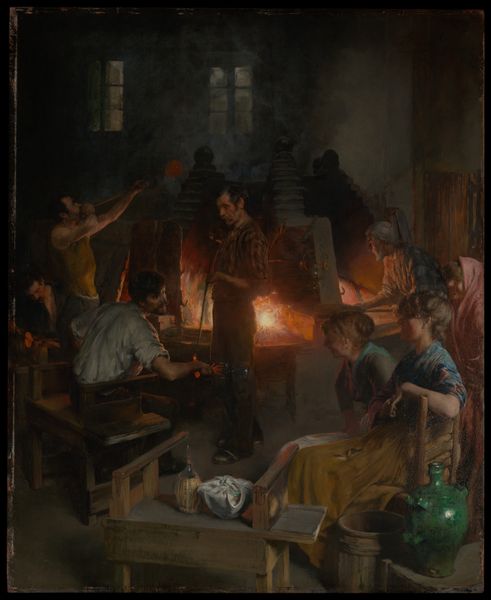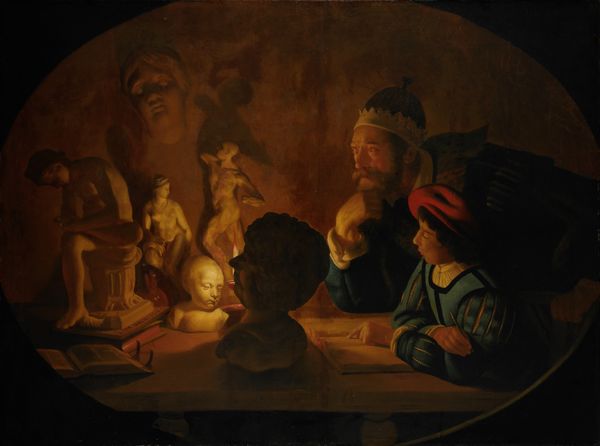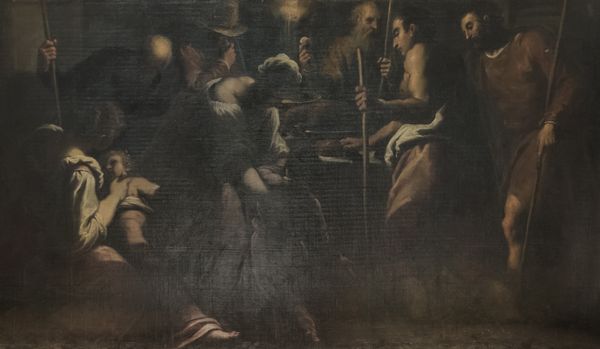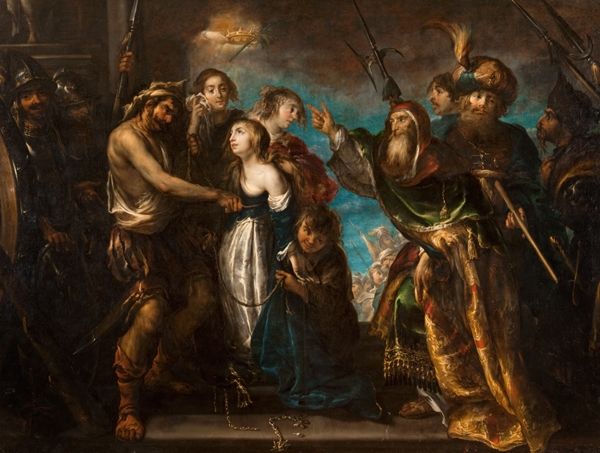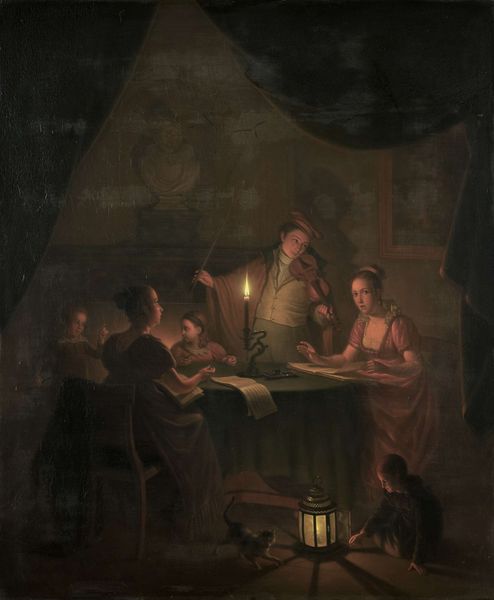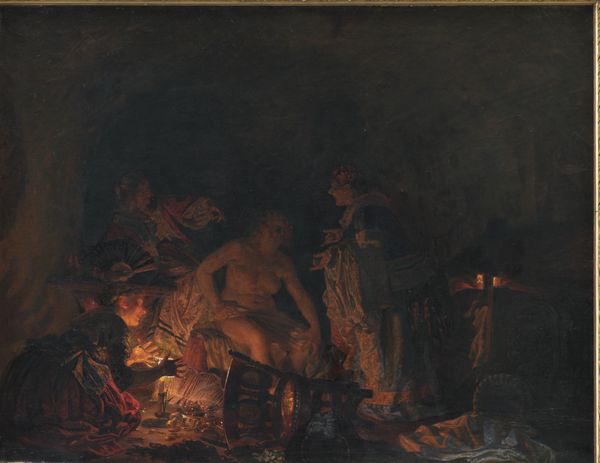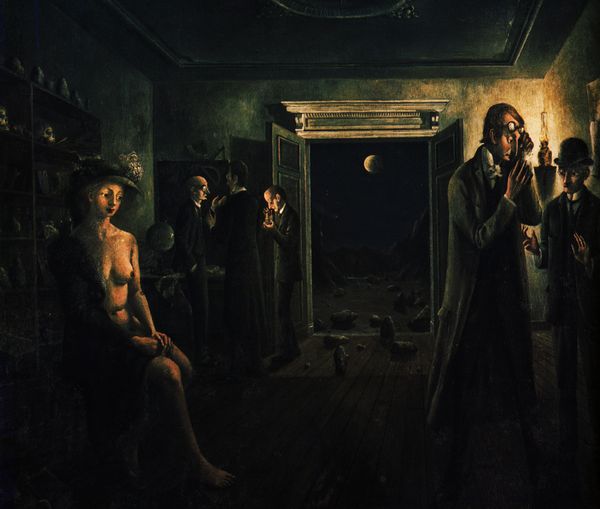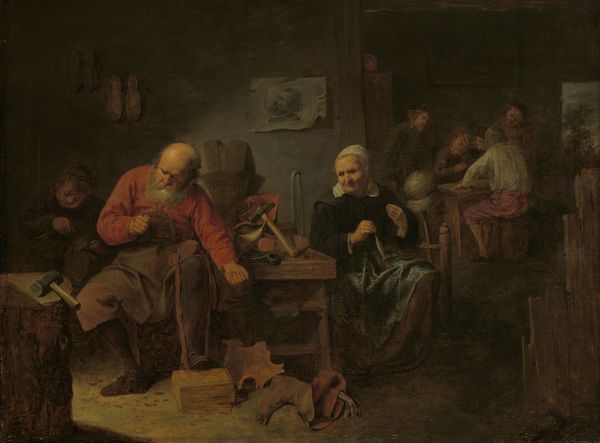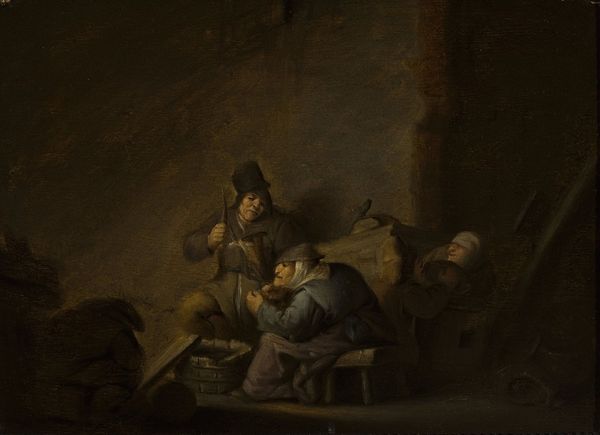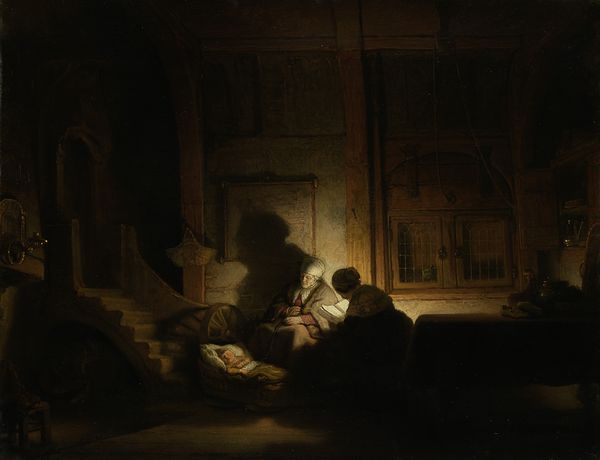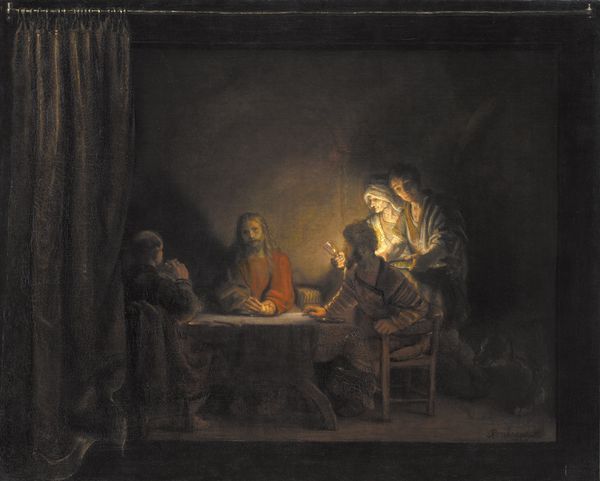
oil-paint, sculpture, oil-on-canvas
#
portrait
#
baroque
#
oil-paint
#
sculpture
#
genre-painting
#
history-painting
#
oil-on-canvas
Dimensions: 51 5/8 × 69 5/8 in. (132.3 × 178 cm)
Copyright: Public Domain
Editor: Here we have Hendrick Terbrugghen's "The Denial of Saint Peter," painted between 1626 and 1629 with oil on canvas. The dramatic lighting definitely creates a somber, almost tense atmosphere. What's your interpretation of this piece? Curator: Considering the materials and historical context, I see this as a pointed commentary on social dynamics of power. The very act of rendering this biblical scene in oil on canvas - a commodity dependent on extraction, trade, and specialized labor - already roots it in a material reality. Look closely at Peter’s clothing – the weight of the wool, the cost of the dye. What social systems are embedded there? Editor: That's interesting, I was focused on the expressions. Curator: The faces are definitely important. But Terbrugghen makes deliberate choices, from the expensive pigments he utilizes to how the composition directs the viewer's eye. This act of "denial" hinges not only on faith but on visibility – on the material presence and social standing indicated through attire, which ultimately condemns him in this painting, no? How is value created? Editor: I guess I hadn’t thought about the value in the materials that way. It's more than just depicting a biblical scene, isn't it? Curator: Exactly. The production of the painting itself becomes an extension of the scene depicted – a moment of social judgment informed by material circumstances. Can we disentangle religious devotion from economic conditions? Editor: It sounds like, from your perspective, every aspect, every material choice tells a story. It really shifts how I view paintings of this period. Curator: Precisely. Art doesn't exist in a vacuum. Understanding its materials and the systems that enable their use reveals so much about the societies that produce and consume art.
Comments
No comments
Be the first to comment and join the conversation on the ultimate creative platform.

